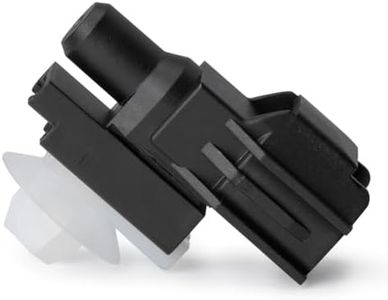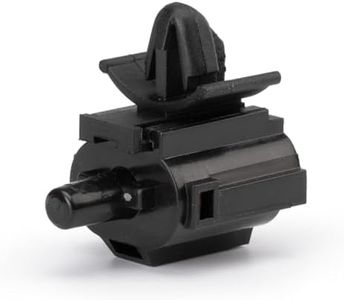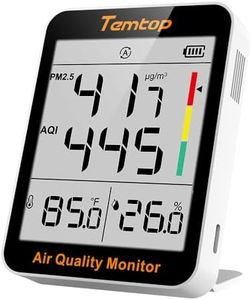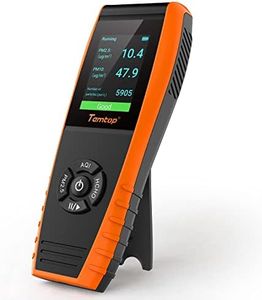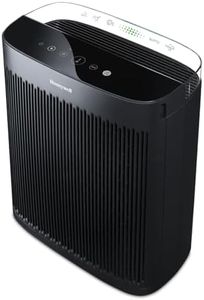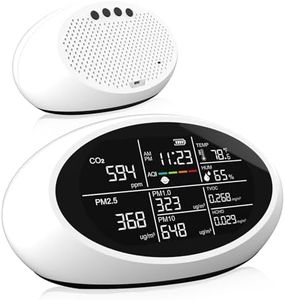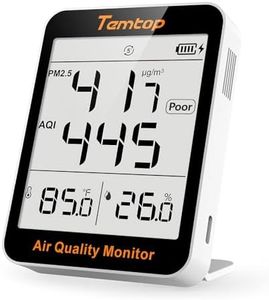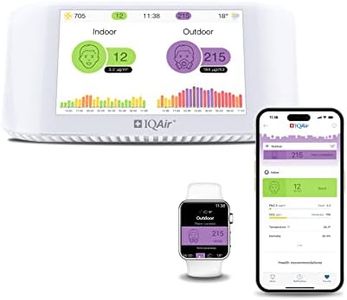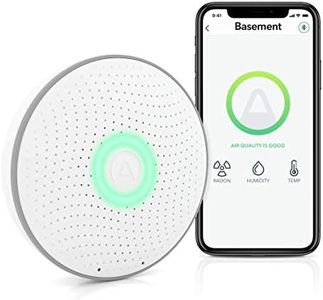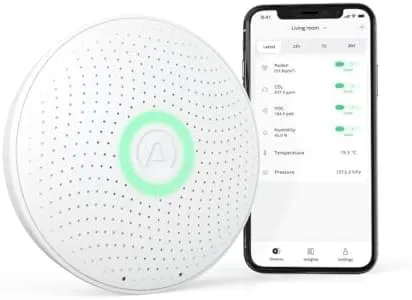10 Best Air Quality Monitors 2025 in the United States
Our technology thoroughly searches through the online shopping world, reviewing hundreds of sites. We then process and analyze this information, updating in real-time to bring you the latest top-rated products. This way, you always get the best and most current options available.

Our Top Picks
Winner
Amazon Smart Air Quality Monitor – Know your air, Works with Alexa
Most important from
4934 reviews
The Amazon Smart Air Quality Monitor is a useful tool for anyone looking to keep tabs on their indoor air quality. It measures key factors like particulate matter (PM 2.5), volatile organic compounds (VOCs), carbon monoxide (CO), humidity, and temperature. This allows you to have a comprehensive understanding of your indoor environment. The color-coded LED display and the detailed air quality scores available in the Alexa app make it easy to stay informed about your air quality at a glance. Additionally, if there's poor air quality, you’ll get notifications on your phone or announcements through Echo devices, keeping you promptly informed.
One of its standout features is the ability to integrate with Alexa-enabled devices, enabling you to automate responses to air quality changes, like turning on air purifiers or fans. It's also designed with ease of use in mind, especially for non-experts, making setup straightforward via the Alexa app. On the downside, the accuracy varies across different sensors with the temperature sensor being quite precise, while others like the PM 2.5 and CO sensors have larger variance ranges.
It operates within specific temperature and humidity ranges, which might limit its use in extreme conditions. The device is lightweight and compact, making it portable but it requires a continuous power source via a micro-USB cable, which can limit placement options. Maintenance is minimal due to its auto-calibration and self-cleaning capabilities. This monitor is ideal for anyone who wants an easy-to-use device to keep their home environment healthy, especially if they already use Alexa-enabled devices.
Most important from
4934 reviews
Airthings 2960 View Plus - Battery Powered Radon & Air Quality Monitor (PM, CO2, VOC, Humidity, Temp, Pressure)
Most important from
1509 reviews
The Airthings 2960 View Plus is a well-rounded air quality monitor designed for those seeking to improve their indoor air environment. It excels in providing a comprehensive set of measurements including radon, PM2.5, CO2, VOCs, humidity, temperature, and air pressure, making it a strong choice for health-conscious individuals or families. The accuracy of its radon detection is particularly noteworthy, given the serious risks associated with this gas, and the device has a solid reputation backed by 15 years of expertise in the industry.
One of its standout features is the continuous monitoring capability, allowing users to receive real-time updates and notifications about their air quality through the free Airthings app. This app is user-friendly and offers helpful tips to improve air quality, along with access to local pollen forecasts, giving it an edge for those who may have allergies or asthma.
There are a few drawbacks to consider. The device requires an internet connection for full functionality, which might be a limitation for certain users. Although it is battery-powered and easily portable, the need to eventually replace the six AA batteries may be a hassle for some. Additionally, while the warranty is appealing, users must remember to register within 30 days to take advantage of the extended coverage. In terms of design, the product is compact and aesthetically pleasing, fitting easily into most home environments. It has a calm tech display that minimizes distractions, which is ideal for people who prefer a subtle approach to technology in their living spaces. However, the reliance on the app means that less tech-savvy users might find it challenging if they encounter issues.
The Airthings 2960 View Plus serves as a robust air quality monitor that meets the needs of those looking to enhance their indoor air quality, particularly excelling in radon detection and user-friendly monitoring features, despite some minor limitations in connectivity and maintenance.
Most important from
1509 reviews
Airthings Corentium Home Radon Detector 223 Portable, Lightweight, Easy-to-Use, (3) AAA Battery Operated, USA Version, pCi/L
Most important from
10344 reviews
The Airthings Corentium Home Radon Detector is a compact and innovative device designed to help users monitor radon levels in their homes, which is essential for health and safety. One of its standout features is its portability, as it operates on AAA batteries, making it easy to use without needing a power outlet. This is particularly beneficial for those who want to place the device in various locations or move it around different rooms.
In terms of accuracy, the Corentium provides reliable long-term monitoring, which is crucial since radon levels can change from day to day. Users can access both short-term and long-term results on the screen, which allows them to act quickly if levels become concerning. The ability to generate self-inspection reports is another strong point, making it convenient for homeowners to keep track of radon levels over time.
However, there are some limitations to consider. While the device is easy to use and lightweight, it may not have as many advanced connectivity options as some newer models, which could limit integration with smart home systems. Additionally, being a battery-operated device means that users will need to replace batteries periodically, although the inclusion of batteries upon purchase is a helpful touch. Maintenance is relatively low, but it’s essential to periodically check the accuracy and functionality, as with any monitoring device. The size is compact, which is great for portability but may make it easy to misplace.
The Airthings Corentium Home Radon Detector is a solid choice for anyone seeking a reliable, portable solution for monitoring radon levels. It provides essential features for maintaining a healthy home environment, making it particularly suitable for families or individuals concerned about radon exposure.
Most important from
10344 reviews
Buying Guide for the Best Air Quality Monitors
Choosing the right air quality monitor can significantly impact your health and well-being by ensuring you are aware of the air quality in your environment. When selecting an air quality monitor, it's important to consider various specifications that determine its effectiveness and suitability for your needs. Understanding these key specs will help you make an informed decision and find the best fit for your specific situation.FAQ
Most Popular Categories Right Now
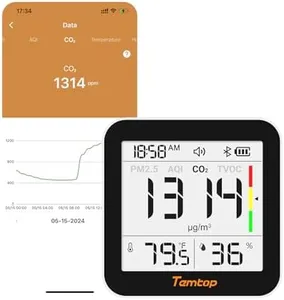

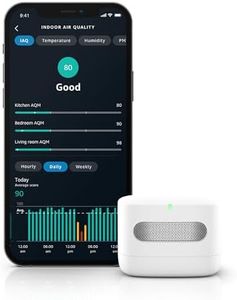
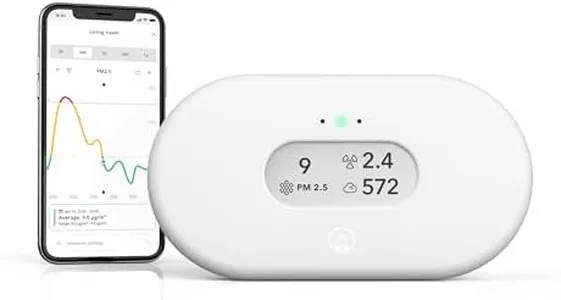
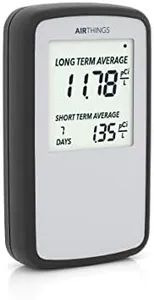
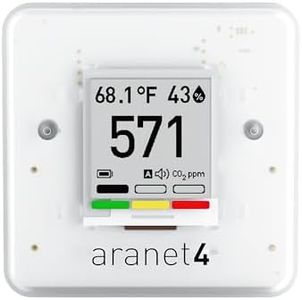
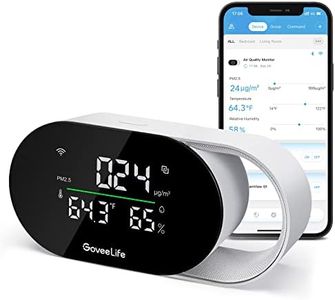
![Necto Cellular Temperature & Humidity Monitor - [4G LTE] No Monthly Fees - Power Outage and Temp Sensor with App Alerts, Remote Monitoring for RV, Pet, Home, Greenhouse & Server Room](https://images-proxy.bestreviews.guide/H-1K6-eT-W48Cw12K0_gnSjypVw=/0x300/https://m.media-amazon.com/images/I/41CzSJXIyVL._AC_CX679_.jpg)
